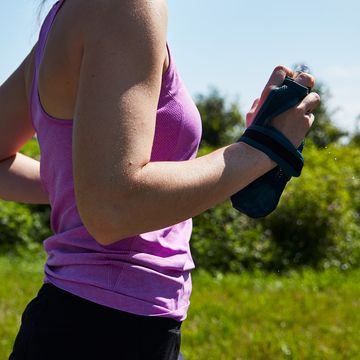5 Best Hiking Pants for Comfort on Every Trail
Before your next sweltering run, make these small changes to avoid being sidelined.
Staying hydrated is more complicated than just drinking water, especially during those summer months. Avoid these hydration pitfalls with a few small changes in your fueling strategy.
You Don’t Drink Enough Water Throughout the Week
Just like cramming for a test, binge (water) drinking the morning of a long run won’t hydrate you properly. Aim to drink about 2-3 mL perpound of body weight at least 4 hours before your run. If you chug an entire liter of prerun water, the kidneys will flush it out, causing frequent midrun bathroom breaks. You may even dilute the body’s sodium balance and increase your risk of developing hyponatremia (or water overload) during your run. Instead, keep a water bottle handy all week and drink throughout the day. Your urine color should be light yellow (like lemonade). Once it gets too dark (like apple juice), you’re already dehydrated.
Another good way to determine hydration status is a sweat test, says Chrissy Carroll, R.D., USAT Level I Triathlon Coach. “Weigh yourself, without clothing, before and after a long run. If you've only lost 1 to 2 percent of your body weight, you’re in the hydration sweet spot. If you've lost more than 2 to 3 percent of your body weight, try hydrating a little more during your long runs.”
There is no standard fluid recommendation for runners because every runner has a different sweat rate, speed, body size, and training efforts. A good starting point is to drink 0.4 to 0.8 liters of water in the first hour. For a run lasting longer than an hour, consume 0.5 to 1 liters of sports drink to replace lost fluid, salt, and carbs. If you lose more than 2 to 3 percent of body weight during your run, drink 1.5 liters of fluid for each kilogram of body weight lost.
Watch Next


Ways to Stay Hydrated During a Long Run

A Guide to Trail Running for Beginners

Bananas, sweet potatoes, beets, tomatoes, oranges, pomegranate juice

How to Make Running With a Water Bottle Easier












